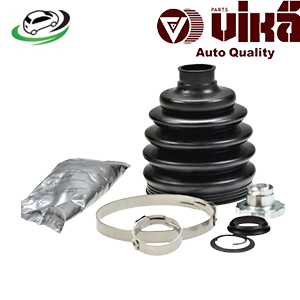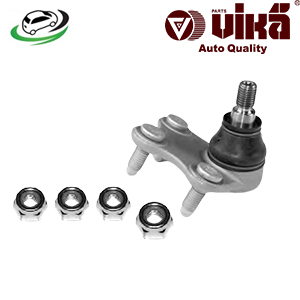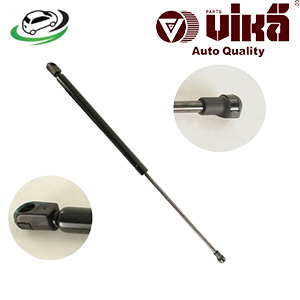-20%
Get Lift Support Struts Shocks Springs Volkswagen Polo 2003-2007 1.6L/2.0L 6Q0823359A
Lift support struts, shocks, and springs are vital components in various automotive and industrial applications. They are commonly used in vehicles to support and control the movement of hoods, trunks, tailgates, and even doors. In this guide, we will delve into the functions, types, benefits, and maintenance of these components, as well as the signs of wear and the replacement process.
Understanding Lift Support Struts
Lift support struts, often referred to simply as gas struts or gas springs, are hydraulic devices that use compressed gas to exert a force. This force is used to assist in lifting, holding open, and smoothly closing various panels, such as a car hood or trunk.
Components of a Lift Support Strut
- Cylinder: The main body of the strut, which contains the compressed gas (usually nitrogen) and hydraulic fluid.
- Piston Rod: A rod that moves in and out of the cylinder, providing the lifting force. The rod is attached to the component being lifted.
- Seals: These prevent the gas and hydraulic fluid from leaking out of the cylinder.
- End Fittings: Connectors at both ends of the strut that attach it to the vehicle or other equipment.
Function of Lift Support Struts
Lift support struts are designed to provide a controlled and smooth motion when lifting or lowering a panel. The gas inside the cylinder is compressed, providing the necessary force to assist in lifting the panel. As the panel is lowered, the gas expands, providing a damping effect that prevents the panel from slamming shut.
Types of Lift Support Struts
There are several types of lift support struts, each designed for specific applications:
- Gas Struts: The most common type, these use compressed gas to provide a lifting force. They are widely used in automotive applications for hoods, trunks, and hatchbacks.
- Hydraulic Struts: These use hydraulic fluid to provide a controlled motion. Hydraulic struts are often used in industrial applications where more precise control is needed.
- Locking Gas Struts: These struts have a locking mechanism that allows the user to lock the strut in a specific position. They are commonly used in applications where the panel needs to remain open at a particular angle.
- Tension Gas Struts: Unlike standard gas struts that provide a pushing force, tension struts provide a pulling force. They are used in applications where a component needs to be held in a closed position, such as in retractable screens or covers.
Benefits of Lift Support Struts
Lift support struts offer several benefits that make them indispensable in many applications:
- Ease of Use: Lift support struts make it easier to open and close heavy panels, reducing the effort required by the user.
- Safety: By controlling the motion of the panel, lift support struts prevent it from slamming shut, reducing the risk of injury or damage.
- Durability: High-quality struts are designed to withstand repeated use and harsh environmental conditions, providing long-lasting performance.
- Smooth Operation: Struts provide a controlled and smooth motion, enhancing the user experience.
- Customization: Lift support struts can be customized in terms of size, force, and end fittings to meet specific application requirements.
Understanding Shocks
Shocks, also known as shock absorbers, are critical components in a vehicle’s suspension system. They are designed to absorb and dissipate the energy from impacts and vibrations, providing a smooth and stable ride.
Components of a Shock Absorber
- Piston: The piston moves up and down within the shock cylinder, forcing hydraulic fluid through small holes, which dampens the motion.
- Cylinder: The body of the shock absorber that contains the hydraulic fluid and piston.
- Hydraulic Fluid: Fluid inside the shock that helps dissipate the energy from impacts and vibrations.
- Valves: Control the flow of hydraulic fluid, adjusting the level of damping based on the road conditions.
Function of Shock Absorbers
Shock absorbers are designed to control the rebound and compression of the vehicle’s suspension. When the vehicle hits a bump, the shock absorber compresses, absorbing the impact. As the suspension rebounds, the shock absorber controls the speed of the rebound, preventing the vehicle from bouncing excessively.
Types of Shock Absorbers
- Twin-Tube Shocks: The most common type, twin-tube shocks have two cylinders—one inside the other. The inner cylinder contains the piston and hydraulic fluid, while the outer cylinder holds additional fluid and acts as a reservoir.
- Mono-Tube Shocks: These have a single cylinder that contains both the piston and hydraulic fluid. Mono-tube shocks are often used in high-performance vehicles due to their superior cooling and more consistent performance.
- Gas-Charged Shocks: These shocks contain nitrogen gas in addition to hydraulic fluid, which helps prevent the fluid from foaming under hard use. This provides more consistent damping, especially in high-performance or off-road applications.
Benefits of Shock Absorbers
Shock absorbers play a crucial role in vehicle safety and comfort:
- Improved Ride Quality: Shocks absorb the energy from bumps and potholes, providing a smoother ride for passengers.
- Enhanced Stability: By controlling the rebound of the suspension, shocks improve vehicle stability, especially during cornering and braking.
- Extended Tire Life: Shocks help keep the tires in contact with the road, reducing tire wear and improving traction.
- Reduced Wear on Suspension Components: By absorbing the energy from impacts, shocks reduce the stress on other suspension components, extending their lifespan.
Understanding Springs
Springs are fundamental components of a vehicle’s suspension system, working in conjunction with shock absorbers to provide support, absorb impacts, and maintain ride height.
Types of Springs
- Coil Springs: These are the most common type, consisting of a metal coil that compresses and expands to absorb impacts. Coil springs are used in both the front and rear suspension systems of most vehicles.
- Leaf Springs: Made of several layers of metal (leaves) stacked on top of each other, leaf springs are commonly used in the rear suspension of trucks and other heavy-duty vehicles.
- Torsion Bars: These springs consist of a metal bar that twists to absorb impacts. Torsion bars are often used in the front suspension of trucks and SUVs.
- Air Springs: These are used in air suspension systems, where compressed air is used to provide support and absorb impacts. Air springs allow for adjustable ride height and a smooth ride.
Function of Springs
Springs support the vehicle’s weight and absorb impacts from road irregularities. They work in conjunction with shock absorbers to provide a smooth and controlled ride. When the vehicle hits a bump, the spring compresses, absorbing the impact. The shock absorber then controls the rebound, preventing the vehicle from bouncing excessively.
Benefits of Springs
Springs provide several key benefits in vehicle suspension systems:
- Support: Springs support the vehicle’s weight, maintaining ride height and ensuring proper suspension geometry.
- Comfort: By absorbing impacts, springs contribute to a comfortable ride for passengers.
- Handling: Springs help maintain tire contact with the road, improving handling and stability.
- Durability: High-quality springs are designed to withstand repeated compression and expansion, providing long-lasting performance.
Signs of Wear and Replacement of Struts, Shocks, and Springs
Over time, lift support struts, shocks, and springs can wear out, leading to a decline in performance. Here are the signs that these components may need replacement:
- Difficulty Opening or Closing Panels: If the panel (e.g., hood, trunk) supported by the strut is difficult to open or doesn’t stay open, the strut may be worn out.
- Excessive Bouncing: If the vehicle continues to bounce after hitting a bump, the shock absorbers may be worn out.
- Sagging Ride Height: If the vehicle appears to sit lower than normal, especially at one corner, the springs may be worn or broken.
- Uneven Tire Wear: Worn shocks or springs can cause uneven tire wear, as they fail to keep the tires in proper contact with the road.
- Leaking Fluid: If you notice hydraulic fluid leaking from the shock absorbers, it’s a clear sign that they need to be replaced.
Replacement Process
Replacing lift support struts, shocks, or springs typically involves the following steps:
- Lift and Secure the Vehicle: Use a jack and jack stands to safely lift and secure the vehicle.
- Remove the Old Component: Depending on the component, you may need to remove other parts (such as wheels or suspension arms) to access the strut, shock, or spring. Unbolt and remove the old component.
- Install the New Component: Position the new component in place and secure it with the appropriate bolts or clamps. Ensure everything is tightened to the manufacturer’s specifications.
- Test the Installation: Lower the vehicle and test the operation of the new component. For lift struts, ensure the panel opens and closes smoothly. For shocks and springs, take the vehicle for a test drive to ensure proper ride quality.
- Follow us on Facebook for more parts.



